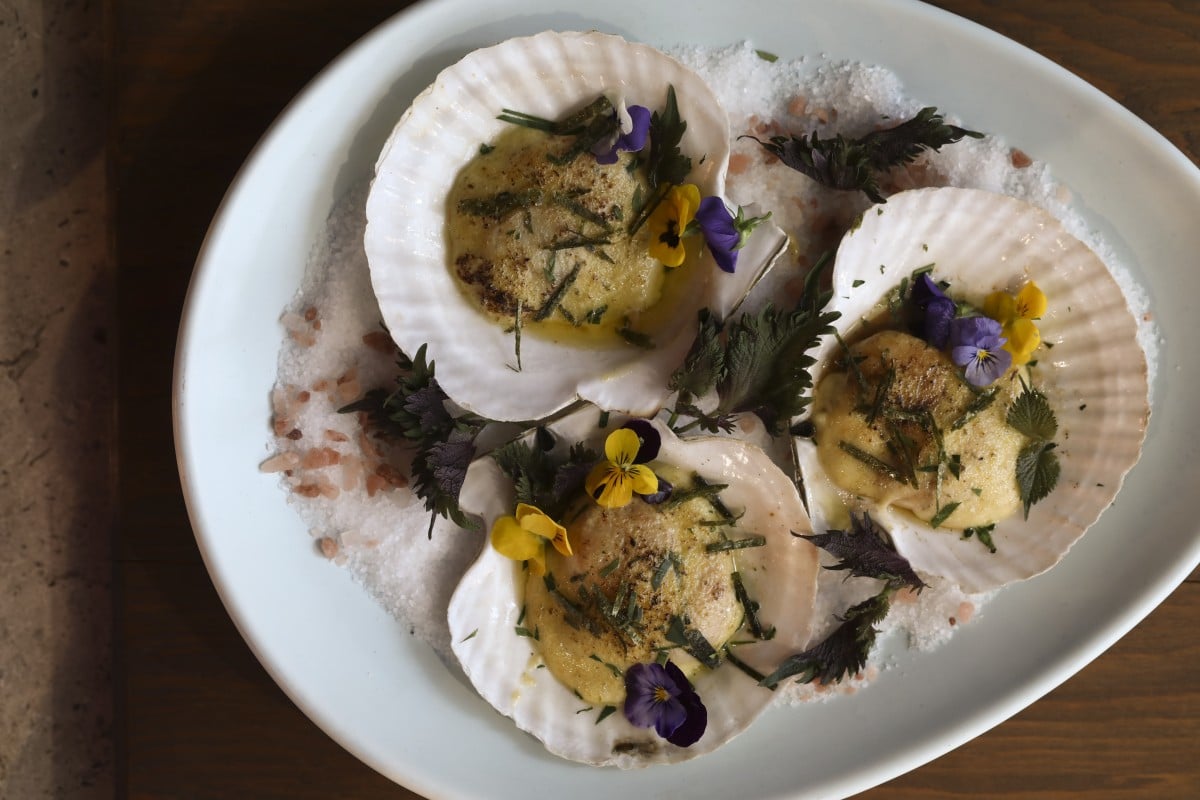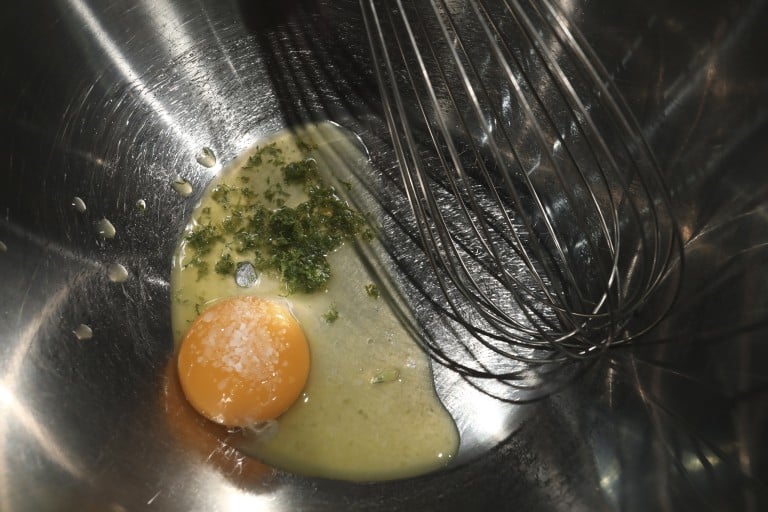
When I lived in San Francisco, in the United States, there was an izakaya I often visited that served a delicious dish that was listed on the menu simply as “grilled oysters”.
Far from being the austere dish you’d expect, the oysters were covered in a rich mayonnaise before being grilled. I didn’t find out until afterwards that the dish has a name: oysters motoyaki.
The preparation of this dish is quite easy, but I usually substitute fresh scallops for oysters. In Hong Kong, scallops are available in most seafood markets, unlike oysters, for which you need to visit a shop that imports them. If you do use oysters, choose small- to medium-size ones. With oysters, the bivalves are still raw – the quick browning of the mayonnaise isn’t enough to cook them.
When I make this dish with scallops, though, I prefer to sear them before topping them with the mayonnaise. I sear them briefly in the pan, so the flesh is mi-cuit (half-cooked), with a raw core.
You have a choice of using home-made mayonnaise or commercial. If you choose the latter, there is only one option: Kewpie, a delicious mayonnaise from Japan, and which, for this recipe, you can just mix in citrus zest and juice. I love the traditional process of making mayonnaise, though, so I’ve given a recipe for the home-made version.
When making mayonnaise, it is important that the ingredients be at room temperature or even slightly warm. Add the oil slowly and whisk constantly; if you add too much oil too quickly, you risk breaking the emulsion and the mayonnaise will curdle. Whenever the emulsion starts getting too thick, whisk in some liquid – either citrus juice or water.
If done correctly, one egg yolk can make 250 grams (9 oz) of mayonnaise (or actually, a lot more), which is more than you will need for this recipe. The leftovers can keep for about 10 days in the fridge. If you are in a rush, you can make the mayonnaise in far less time using an immersion blender – look up the technique on YouTube.
To flavour the mayonnaise, use whatever tart fresh citrus you like. Japanese citrus, such as yuzu or sudachi, are delicious, as are calamansi, lemon or lime.

Make the mayonnaise first. Dampen a tea towel, then shape it into a nest for the mixing bowl. (This prevents the bowl from moving around on the work surface.) Put the egg yolk in the bowl, add the citrus zest and salt, and immediately start whisking.

Start adding in the oil a few drops at a time, whisking to completely incorporate the oil before drizzling in more. After creating a stable emulsion, you can add the oil in a very slow drizzle, whisking constantly. Whenever the mayonnaise gets too thick, mix in some liquid, first using up the citrus juice, then, when you run out, adding some warm water. The mayonnaise should be thick, without any oil floating on the surface – when you draw a spoon through the mixture, it should leave a track that doesn’t fill in.
Taste the mayonnaise and add more salt and/or citrus zest and juice, if necessary.
If using oysters, shuck them and discard the top shell. Cut the adductor muscle to detach the oyster from the bottom shell. If grilling the oysters under an oven grill, spread a layer of rock salt on a baking dish, then place the oysters on the salt.
If using scallops, shuck them, reserving the prettier shell from each scallop to use for presentation. Detach the scallops from the shells.
Trim off and discard the liver (the dark part near the hinge of the shell). Trim off (but do not discard) the mantle (the frilly bit around the outside of the scallop meat) and the “roe” (which is orange for females, off-white for males).
Heat a skillet (preferably cast iron) over a medium-high flame. When the pan is hot, add about 30 grams (1 oz) of butter. Use a paper towel to quickly coat the pan with the butter, then immediately add the scallop meat. Sear for about 30 seconds on each side, so the meat is still rare in the centre.
Take the scallops from the pan, then add the roe. Cook for about 30 seconds on each side, then take the roe from the pan.
Add the scallop mantles and sauté for about 30 seconds, then remove from the pan.
If you like (for easier eating), slice each piece of scallop meat in half, into two discs. Place the scallop meat in the reserved shells. Place one roe and one mantle into each shell, then put them on a bed of rock salt (if grilling them under the oven grill).
If using an oven grill, heat it to high. Spoon some of the mayonnaise over the oysters or scallops, using enough to entirely cover them – you shouldn’t see the flesh. Sprinkle lightly with sugar (this helps them brown), then slide the pan under the grill, about 2.5cm (1 in) from the heating element.
Grill quickly – just until the mayonnaise is bubbling and medium-brown, then remove from the oven.
If using a butane or propane torch, spread the mayonnaise over the oysters or scallops, then sprinkle lightly with sugar.
Use the torch to brown the surface until it’s bubbling.
Put the oysters or scallops on a dish and decorate with edible flowers, shiso leaves and/or shredded nori, then serve immediately. Serves four as an appetiser.